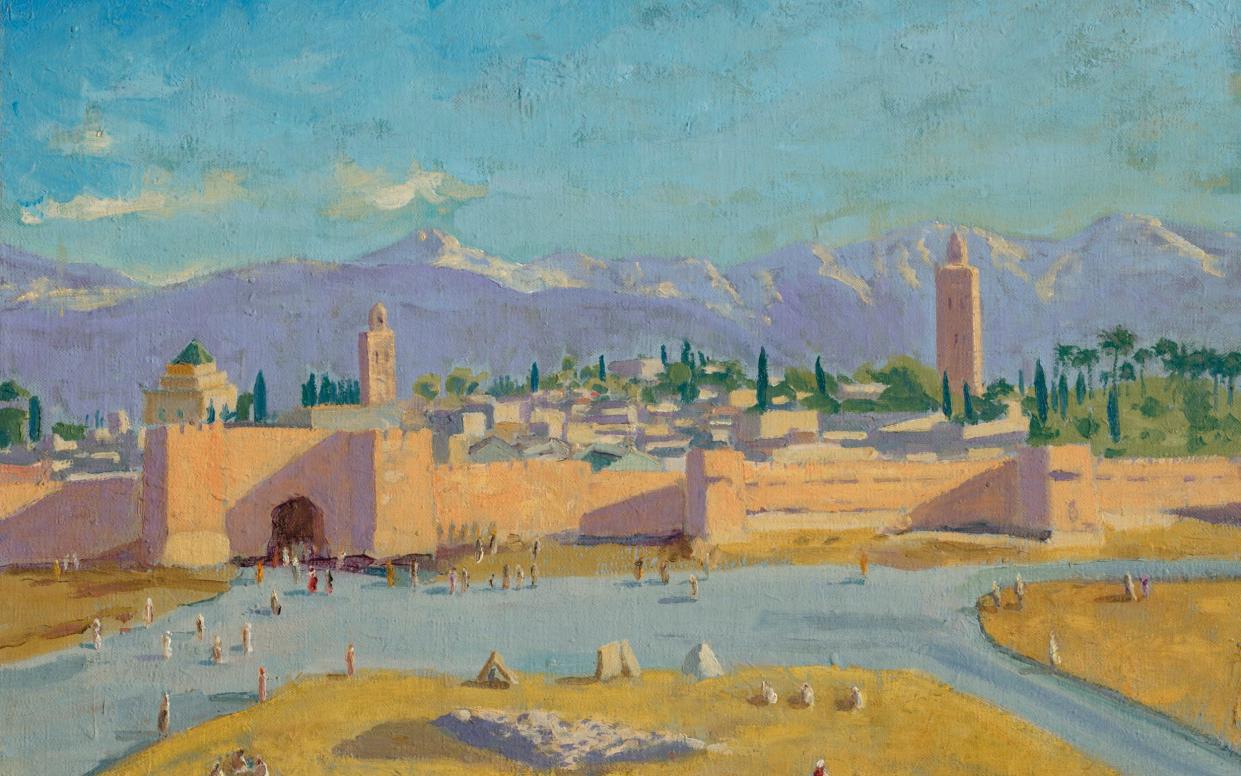Churchill was a great man – but a bad artist

When was the last time you visited the Wallace Collection? Housed within a grand mansion in central London, it has a stonking collection of Old Master pictures as well as arms and armour. Its director, Xavier Bray, is smart and resourceful, and oversees a striking programme of temporary exhibitions and displays. Yet, for reasons I cannot fathom, it sometimes fails to cut through.
This week’s announcement of its 2025/26 programme should get people’s attention. An exhibition of new work by Grayson Perry, to mark his 65th birthday, will surely pull in punters. A display of Caravaggio’s Victorious Cupid (1601-02) – a provocative portrayal of a cheeky winged scamp that, in a coup for Bray, is being lent to a British institution for the first time by the Gemäldegalerie in Berlin – should also increase footfall.
But then there’s the third show in that announcement, scheduled to open in spring 2026: Winston Churchill: The Painter. With more than 50 pictures, including a large group of loans from Chartwell, Churchill’s family home for more than four decades (where he often painted his goldfish pond), it promises to offer visitors “the very best of the former Prime Minister’s output” as an artist.
There’s just one snag (although I hesitate to say this so bluntly): Churchill’s “very best” efforts as a painter aren’t up to much. His best efforts as a politician? Now we’re talking. Readers of The Telegraph don’t need reminding that Churchill was the greatest statesman in British history. As a painter, though, he ranks lower down the nation’s honours list. I mean, he loved to paint, and was proficient with a brush, in an amateurish, uninspired fashion (in fairness, he only took up painting in 1915, when he was 40). But this doesn’t mean that what he painted is worth looking at for long, if the primary criterion is artistic merit.
Consider his best-known picture, and the only landscape he produced during his wartime premiership, Tower of the Koutoubia Mosque (1943). Three years ago, it made headlines when it was sold at auction by the American actress Angelina Jolie for almost £8.3 million (a record). A light-drenched view of Marrakech, with the Atlas Mountains beyond, it has a pleasing simplicity, and a pretty palette of peachy-pinks and lilacs.

Other than this, though, it has little to recommend it – apart, of course, from the fact that it was Churchill who painted it, while Nazi tyranny was still unvanquished. Hence that astonishing price, which also reflects the picture’s subsequent history: like many of his paintings, Churchill presented it as a gift, in this case to President Franklin D Roosevelt.
The date of its execution, January 1943, is revealing. In occupied Paris, Pablo Picasso was producing stark still lifes that expressed the tension and deprivation of the times. Although there are a few purplish shadows in Tower of the Koutoubia Mosque, there’s no hint whatsoever of the darkness of the conflict. For Churchill, painting wasn’t an expression of reality, but an escape from it.
Bray concedes that Churchill wasn’t a “first-rate painter” (“He did paint a lot,” he tells me, “and [his pictures] vary in quality”), but argues that he was nevertheless “okay”, even “a painter to be reckoned with”, who sought guidance from, among other professionals, John Lavery and William Nicholson, and could be “surprisingly good”. (He was certainly good enough to exhibit at the Royal Academy of Arts, under a pseudonym, David Winter.) Bray hopes to persuade a sceptical audience that Churchill’s art has “redeeming” aspects.
Yet, fundamentally, Churchill was a Sunday painter with a weakness for overworking pictures. Sometimes, it’s worth taking risks. But Winston Churchill: The Painter is unlikely to pay off, even if it provides, as Bray puts it, “a new angle” on someone so famous.


